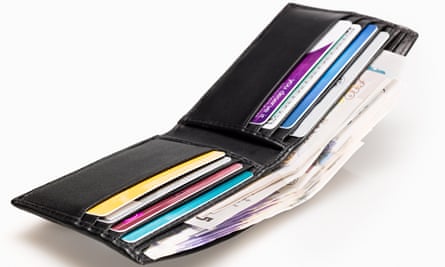
While interest rate rises put pressure on mortgage borrowers on variable rates or those coming to the end of fixed-rate deals, they do bring some good news for savers. The trouble is, interest earned on those savings is still nowhere near inflation, currently at 8.7%. If you are looking to save for the future, then, it is wise to consider investing in ways that will let your money earn more for you. But where should you start?
Pay off expensive debts
High-cost credit is a drain on your finances, and experts advise that paying it off should be a priority, before you consider investing in the markets.
“You want to tackle credit cards, overdraft, store cards, buy-now, pay-later – any of that kind of debt,” says Laura Suter, the head of personal finance at the investment platform AJ Bell.
However, you don’t need to be entirely debt free before you make a start with investments. “You need to be sensible about this,” says Sarah Coles, the head of personal finance at the rival platform Hargreaves Lansdown.
“Some people will borrow throughout their life; this shouldn’t be a reason to put off saving and investing for ever.” For that reason, you can usually disregard mortgages, 0% credit deals with a clear plan to pay them off, and student loans.
 View image in fullscreenPay off your credit cards and store cards. Photograph: Image Source/Getty Images
View image in fullscreenPay off your credit cards and store cards. Photograph: Image Source/Getty Images
Build a cash fund first
“As a rough rule of thumb, anyone of working age should have three to six months’ worth of essential expenses in an easy access account to cover emergencies,” Coles says.
While cash savings are there as a safety net rather than to make big returns, it makes sense to select an account that pays the best possible rate of interest. Easy access accounts are best for money you may need at short noticeLook out for restrictions, however. Some of the highest-paying easy access accounts only allow a limited number of withdrawals each year. Aldermore’s Double Access account, for example, pays 3.85% if you make two or fewer withdrawals in a 12-month period. If you make three or more withdrawals, that rate drops to 1% until the anniversary of your account opening.
“Once these things are in place, people should, at least, consider investment for any money they won’t need for five to 10 years, or more,” Coles says.
Use up tax allowances
Making use of tax-free allowances can save you considerable sums, so start by utilising any tax-free means of investing that you can – although which ones you choose will depend on your life stage, and how and when you plan to use your investments.
If your main aim is to plan for your retirement, pensions are usually the best place to focus your efforts. “Pensions are kind of the gold standard of tax wrappers,” says Laura McLean, a certified financial planner at the Private Office. Check whether you are maxing out the matching that your employer will give you – it’s effectively free money, after all.
If you think there’s a chance you will want to access the money before retirement, you can still benefit from tax advantages by using the Isa allowance – up to £20,000 a year per person in 2023-24.
With investments held in an Isa wrapper, there is no tax to pay on interest, capital gains or income earned on savings and investments held. You can split the total amount you invest so that you hold your emergency cash fund in a cash Isa and begin dipping a toe in the markets through investments held in a stocks and shares Isa, for example.
 View image in fullscreenHave you considered a stocks and shares Isa? Photograph: Andrew Paterson/Alamy
View image in fullscreenHave you considered a stocks and shares Isa? Photograph: Andrew Paterson/Alamy
Start with DIY investing
“Financial advice costs an average of £150 an hour and tends to take several hours, and some people just don’t have the available cash,” Coles says.
If paying for advice doesn’t make sense at this stage, investment platforms and fund supermarkets allow you to invest in a straightforward, and often relatively low-cost, DIY way, allowing you to research and choose your own investments from the many options on offer.
There are differences between the platforms but what they all have in common is the ability to offer access to a vast array of investment choices.
A platform that is good value for one investor may work out expensive for another
These range from pooled investment funds holding a collection of different assets, through to individual shares – and you can invest within an Isa wrapper, too. Some of these platforms include Hargreaves Lansdown, AJ Bell and Bestinvest, to name just three.
Fees, and how they are charged, vary – usually involving fixed transaction fees, a percentage of funds invested, or a combination of both. AJ Bell, for example, charges £1.50 a transaction, and a 0.25% annual funds “custody charge” (effectively a service charge) on the first £250,000 of funds.
Charging tiers may differ, depending on the amount of money you invest and how often you make a transaction, and different funds you choose may have their own fees, too. A platform that is good value for one investor may work out expensive for another. It’s important to compare carefully based on your own circumstances – otherwise a sizeable chunk of your money could disappear in fees.
Start small – but be regular
“A lot of people think investing is for the very wealthy, and that they need to have thousands and thousands sitting there before they can start. Actually, one of the best ways to start is by doing monthly investing or regular investing,” Suter says.
“You can start from £25 a month – then, if you find you have more spare cash after a while, you can increase that amount. You can add lump sums over time if you have money for a birthday, or you get a bonus from work or some inheritance, for example. It means you can learn about investing as you go, without risking large sums of money while you’re getting to grips with it.”
Small amounts regularly is a tried-and-tested way of spreading risk, and much more effective than waiting until you have built up a lump sum.
It also helps you ride out the lows of the stock market and benefit from the highs. When markets fall, you get more shares for the same amount of money, and when markets rise again, so will the value of all those shares you bought cheaply.
 View image in fullscreenYou do not need thousands of pounds to start investing regularly. Photograph: Rosemary Calvert/Getty Images
View image in fullscreenYou do not need thousands of pounds to start investing regularly. Photograph: Rosemary Calvert/Getty Images
Opt for pooled funds
Taking a punt and buying shares in individual companies is a very risky business. Instead, most beginner investors opt for the ready-made diversification of a fund such as a unit trust – effectively a basket full of shares in a range of different companies. “These diversified investment funds mean you’re really spreading your risk around hundreds, if not thousands, of underlying stocks,” McLean says.
A popular starting point is a tracker fund – also called a passive, or index, fund. Here, the fund invests in a bunch of companies listed on one index – for example, the FTSE All Share – and follows the fortunes of that index rather than attempting to beat its returns.
One of the big appeals is that this passive approach to investment comes with far lower administration costs – after all, compared with actively managed funds, which come with a team of researchers and a fund manager selecting investments, the running costs are minimal.
View it as long term
“Investing in the markets should be seen as a long-term endeavour. You shouldn’t be seeing it as a get-rich-quick scheme, where you’ll put some money in, double it within six months and then take it out,” Suter says.
“We generally say you should invest for a minimum of five years. If you were to withdraw money during that time and markets had dropped, then you would see a loss. But five years is a good period to be able to ride out some ups and downs in the market and get a decent return on it.”
If it’s too good to be true …
“There are some red flags you need to look out for,” Suter says.
Anything where a company has contacted you out of the blue should be a warning signAJ Bell’s Laura Suter
“For example, there is something wrong with any investment that says it guarantees you a certain annual return, because investments just can’t do that. You’re at the whims of what’s going to happen in the market.” Beware if someone approaches you out of the blue, she adds – whether it’s a phone call, email, text or a private message on social media. “Anything where a company has contacted you out of the blue should be a warning sign because legitimate finance companies wouldn’t do that.”
Similarly, companies offering returns that seem very high are probably not going to be a safe place to put your money, and if there are time limits (invest before such a date or you will miss out), then you should also think twice.
